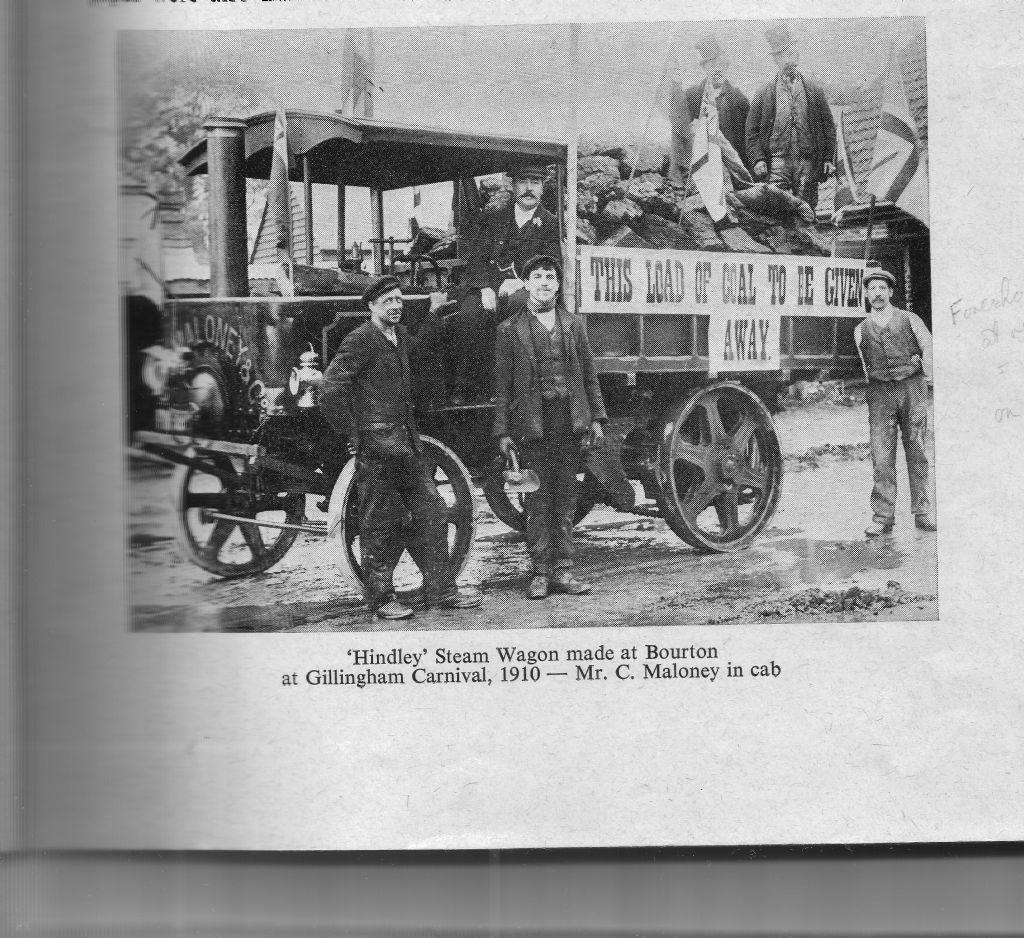Thankyou Rooossone!
With apologies for diverting from the OP……
This is the photo that led me astray from the safety of familiar things like the Foden 'C'-Type (everyone has one of them!). It appealed to me as unusual to say the least, and Dorset made.
This Gillingham is that with a hard 'G', in North Dorset, near E.S Hindley & Sons' factory in the village of Bourton.
Charles Maloney, local business-man, resplendent in the three-piece suit emphasising that mark of success – the fuller figure – was the lorry's owner. The two in front were clearly the Driver and Mate – the latter he with the more, err, "casual" clothes and the artfully-held lump of coal in the shovel.
The two characters in their Sunday Best, on top were probably two of Maloney's men. So too, probably, he of the labouring classes at the back; appearing very unsure he ought be photographed in such august company.
What the banner does not say is, the coal given to whom?
In fact it was to the "local poor".
The photograph illustrates a paper showing the surprising range of industries in that area at the time, especially after it became served by the London & South-Western Railway's London – Salisbury – Exeter line, but it was predominantly farming country (still is).
Farm labourers were on poor pay and conditions even for the era, and lower-skilled factory workers were not greatly better paid. Most "working men" in these old pictures look stick-thin though may have had quite a lot of stamina, and the characters here are no exception. There were no State welfare, health and pensions systems. If you were not working and had no income, the haven of last resort was the dreaded and dreadful work-house.
Maloney's various businesses included retailing coal, hence the Hindley wagon. He also tried making breeze-blocks but was mean with the cement, so they rapidly crumbled away! Much more successful were his 'Lion' oil-engines made in a foundry established in a local clay-pit that otherwise served brick, tile and pottery making, by another company.
Reference:
The photograph and information are from a comprehensive article:
– Howe, C.L.L., Gillingham: An Industrial Town; in "Dorset Year Book 1977", historical annual published by The Society of Dorset Men; pp18-24.
The faint squiggle in the margin is part of my pencil note on measuring the wagon.

 Grindstone Cowboy.
Grindstone Cowboy.




